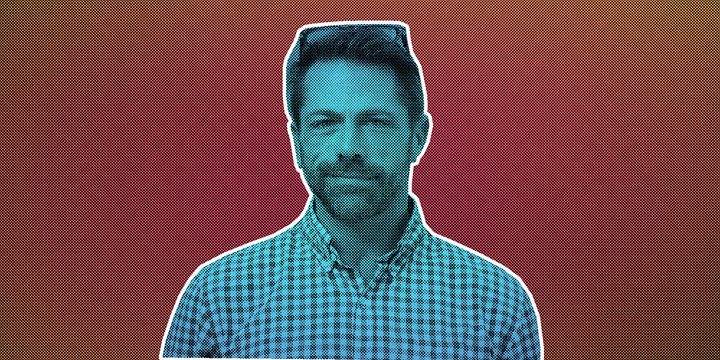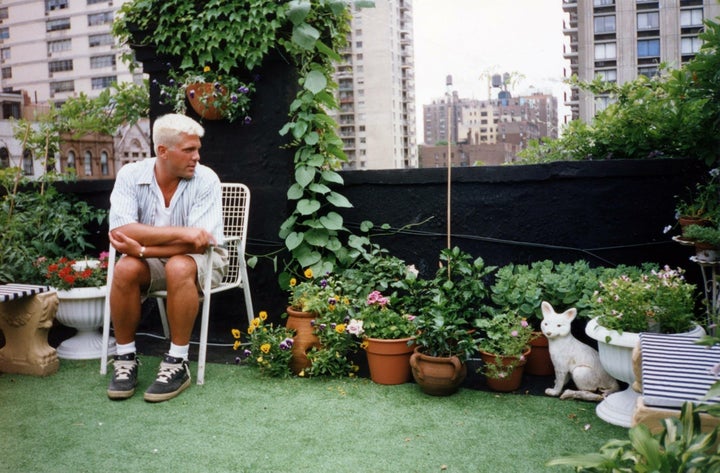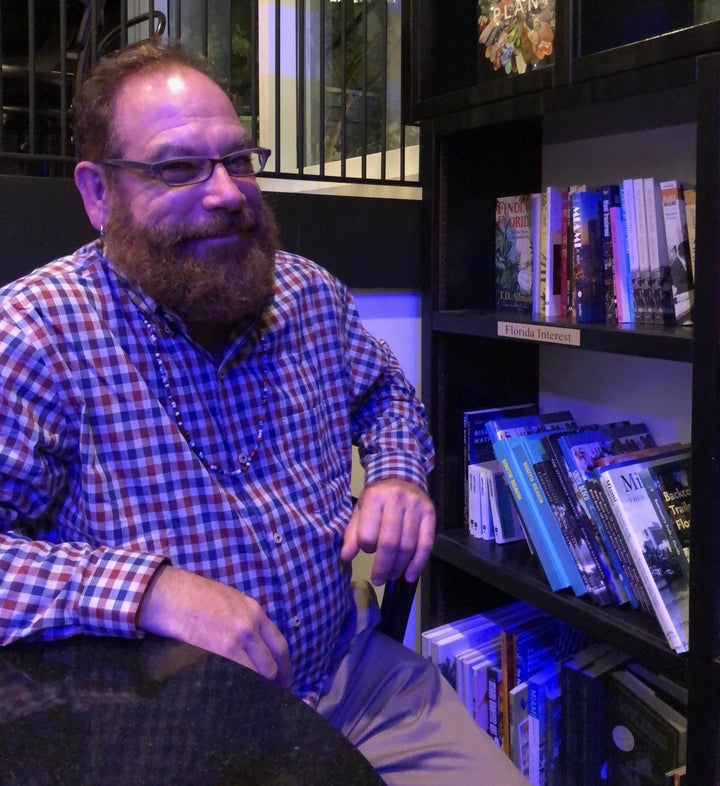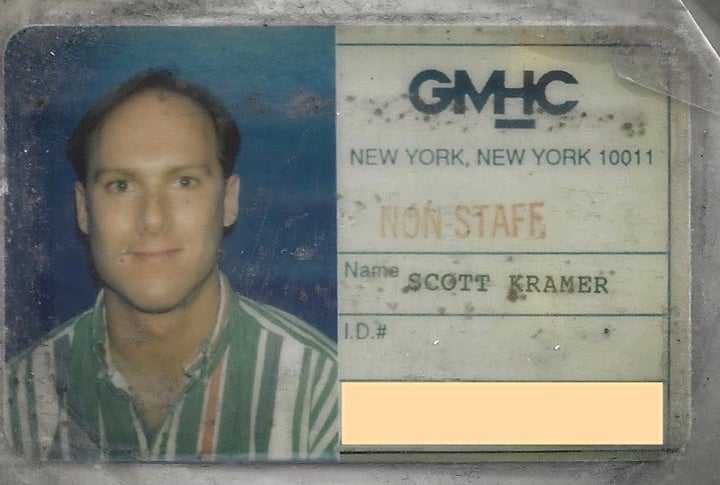
Sean McKenna, 55, was diagnosed with HIV in 1992. He takes 22 pills a day and deals with diarrhea, joint pain and HPV. He’s been on disability, unable to work, for over 20 years.
Luigi Ferrer, 59, has been HIV-positive since 1985, but he works full time and takes only one pill a day.
McKenna has survived bouts of pneumocystis pneumonia and other HIV-related complications that have killed many of his peers. Ferrer has never had a life-threatening complication.
Scott Kramer, 50, was diagnosed in 1988. He survived a bout of PCP in 1992 but was able to return to work full time.
“There’s no one way to be a long-term HIV survivor,” said Kramer, a therapist who specializes in people with HIV and runs support groups in New York City for gay men with the virus. “We’ve all been through trauma, but with a mix of support and luck, we’ve survived longer than we ever imagined.”
Long-term HIV survivors ― generally defined as those diagnosed before lifesaving drugs were released in 1996 ― face their own set of physical and emotional challenges as they age. Some were lucky to have relatively mild bodily symptoms. Others became isolated by illness, stigma and the inability to work. But all dealt with a terrifying diagnosis at a time when doctors had little to offer.
In recent years, a few survivors have emerged to speak up for their peers, whose lives and stories they say are unappreciated or forgotten by today’s gay community.

On June 5, 1981, the Centers for Disease Control and Prevention reported cases of young gay men dying from a rare pneumonia, later identified as PCP. It was the first official recognition of the HIV/AIDS epidemic.
For five years now, June 5 has been designated HIV Long-Term Survivors Day by the advocacy group Let’s Kick ASS (AIDS Survivor Syndrome), which estimates there are some 34,000 long-term survivors in the U.S.
Long-term survivors face challenges generally not shared by those diagnosed after 1996. Many continue to experience a cascade of physical symptoms in part because they spent years taking early drugs that were either ineffective or harmful. Emotionally, they suffer from the trauma of years of watching their friends die painfully while expecting they would be next.
At the beginning, no one knew long-term survival was possible, much less what it would look like.
In 1996, McKenna survived his second PCP hospitalization and went on antiretroviral drugs, known as ARTs. His condition was no longer life-threatening, but persistent symptoms, some debilitating, meant he couldn’t hold a full-time job.
Many of his friends had either passed away or were too sick to socialize, and without a job, he’d often spend weeks or months without any meaningful social interactions.
During the worst days of the plague, when he’d attend about eight funerals a month, McKenna said there was more support for people living with HIV. But once better treatments became available, he said the gay community moved on to new issues, like marriage equality.
“In the beginning, people would check on me, but around the late ’90s, people stopped dying from HIV like they used to. And then the calls and visits stopped,” he recalled. “It was hell to watch people die in the ’80s, but my personal hell was when long-term survivors were forgotten.”
When Ferrer was diagnosed, he went through an initial phase of denial. He didn’t seek treatment or take medication and continued pursuing his Ph.D. in oceanography. He didn’t have any symptoms for some eight years.
But that changed in 1993 when he developed minor infections. “It started with bronchitis, but I was always running to the doctor for something,” Ferrer said. “I saw the writing on the wall.” He assumed the worst was coming.

He gave up oceanography to become the executive director of an AIDS service organization, and he has worked in HIV/AIDS advocacy and support since then. He’s now the community relations manager at Miami’s Pridelines, where he spends his days administering free HIV testing and passing out information.
“There’s days where I miss being out on the ocean diving,” he said. “But I didn’t feel like I had a choice: I was drafted into this work. At the time, I never thought I’d still be here doing this.” His health has been mostly stable since 1996.
His career shift had one welcome result: the new connections he made with the queer community.
In his first AIDS service job, Ferrer shared an office with a local bisexual support and advocacy group. Through them, he embraced his own bisexuality and became an advocate. He’s currently on the board of BiNet USA, a national bisexual network. He also got involved with the Radical Faeries, a community he describes as gay hippies who reject society’s norms. Since 1998, he’s attended their 10-day festival in a forest outside Nashville every year.
“Nudity is not frowned upon,” he said, laughing. “People come and share art and stories of their communities. For me, it’s a family of older queers.” He said that some of the festival-goers are fellow long-term survivors as well, but he doesn’t know how many. “There’s no stigma there, so we don’t talk about it much or count the numbers.”
Activism and the need for community eventually called McKenna as well.
He said he received a wakeup call in 2012 when prominent HIV activist Spencer Cox died after he stopped taking his medication. Cox had what advocates call “pill fatigue,” when long-term survivors lose the motivation to stay on their meds, generally because of depression.
“In the beginning, people would check on me, but around the late ’90s, people stopped dying from HIV like they used to. And then the calls and visits stopped.”
- Sean McKenna
McKenna felt obligated to speak up for long-term survivors, but he said it wasn’t easy.
“People didn’t want to pay attention to me at first. They wanted to think ARTs had solved everything,” he said. “It was like, you’re alive, isn’t that enough?” He said there were barely any services for long-term survivors even in New York City.
He focused his efforts on the Gay Men’s Health Crisis, a pioneering nonprofit founded in 1982 to respond to the AIDS epidemic. McKenna urged them to pay more attention to the needs of long-term survivors, and in 2015, after three years of lobbying, they re-implemented a buddy program.
Susan Rowley, who runs the program, said in an email that the phrase “long-term survivors” wasn’t in use until recently, and it took some time to adjust programming to meet the specific needs of that community.
“They’re still dealing with the stigma of HIV, societal ageism, and the increasingly challenging physical and medical conditions that come with age,” she said. “We know that face-to-face meetings in a social setting or even a weekly phone call can be a significant help.”
The program currently has 28 survivors, with two on the waiting list.
Kramer, the therapist, said community support is absolutely essential for people with HIV. “That’s why I do what I do, to create a sense of community,” he said.
Like Ferrer, Kramer spent some years in denial after his diagnosis. But in 2005, he decided to leave his career as a graphic designer and become a social worker, specifically to help others diagnosed with HIV.

All three survivors spend time talking to younger gay men about HIV and safe sex. Ferrer said there’s not nearly enough awareness about the virus, noting that Miami has the highest infection rate in the country.
Kramer said the younger men he encounters are reasonably well-informed, although they could know more. “When I was their age, I wasn’t so concerned with what happened 30 years ago either,” he said.
McKenna said he tries to explain to younger men that PrEP, the HIV prevention drug that’s become widely used in the last few years and encouraged many gay men to stop using condoms, doesn’t protect against other sexually transmitted diseases. He cautions that unprotected sex still carries risk ― a message that often falls on deaf ears.
“They tell me, ‘You’re slut-shaming us,’” McKenna said.
He’s heard that before.
In 1981, in the early days of the epidemic, writer Larry Kramer, who co-founded the Gay Men’s Health Crisis, began to sound the alarm about unprotected sex, but many gay men saw that as a fear tactic that would diminish their newly found sexual liberation. McKenna listened to the warning and volunteered to pass out condoms at a Pride parade. It was a tough sell.
“The first person I gave one to threw it back at me, spit in my face and accused me of slut-shaming,” he recalled.
“I just want young people today to be safe. They don’t realize ― my generation, we were the guinea pigs, we put faith in bad drugs that failed us,” he said.
Whether people want to listen or not, McKenna will keep speaking up. After his success with the buddy program, he knows he has more to give.
“No one ever asks about my future,” he said. “I don’t know how much longer I’ll live, but my future is not sealed.”
Clarifications: A statistic in this story about HIV infection rates in Miami has been updated to include more recent data. Language has also been amended to reflect that Gay Men’s Health Crisis had a buddy program that closed in 2005 and was re-established in 2015.
#TheFutureIsQueer is HuffPost’s monthlong celebration of queerness, not just as an identity but as action in the world. Find all of our Pride Month coverage here.